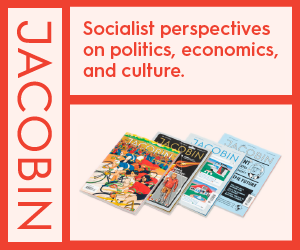The general strike that could have been
What is the point of a union if the union leadership is ideologically committed to a ‘labour peace’ that no longer exists?

CUPE members celebrates te defeat of Doug Ford’s anti-worker Bill 28. Photo courtesy CUPE National/Twitter.
For a response to this article, see “A first post-pandemic political victory—hardly a ‘general strike that could have been’” by Herman Rosenfeld, published in Canadian Dimension on November 11, 2022.
When the OSBCU strike started on Friday, November 4, thousands of labour activists across the province were filled with a sense of hope; something all too rare in the labour movement these days. Not only was a union finally defying back-to-work legislation, but they were being joined by other unions, tacitly defying both the bans on solidarity strikes and wildcat strikes. And then when Ford doubled down, union locals were informed to start preparing for escalating actions into last week; whispers abounded of a general strike. Polls suggested that upwards of 50 percent of the province supported some sort of escalating action by other unions, and that a large majority put the blame for the strike squarely on the provincial government. The unprecedented situation (which seems to be the word of the hour) seemed like it would provide opportunities for advancing the class struggle in both Ontario and the country as a whole.
Locals across the province spent the weekend preparing to wildcat. And then, unceremoniously, the union leadership balked. After Ford announced in a garbled and duplicitous manner that he would repeal Bill 28, CUPE leadership announced that as a show of “good faith” they would end their pickets after having received a written promise (without a timeline) from Ford. Dreams of a general strike evaporated in an instant. OSBCU members will now return to work without a contract, essentially in the same place they would have been before Bill 28 was tabled. The right to strike has been restored, so long as workers choose not to use it. What happened?
To understand why the union leadership walked back so quickly, it helps to understand some of the class dynamics underlying the current labour relations framework in Ontario. The so-called “labour peace” that prevails in Ontario has its origins with the Rand Formula, which was imposed on the labour movement by justice Ivan Rand in the aftermath of the particularly bitter 1945 Ford Motor Company strike in Windsor. Seeing the impasse between the bosses and workers as contributing to the radicalization of the working class (Rand specifically cited communists agitating within the ranks of otherwise honest unions), Rand came up with a framework that seemingly regulated industrial conflicts. Unions would receive recognition from the bosses under certain conditions, and the company would collect dues directly from workers and then remit them to the union. In turn unions would agree to not striking between contracts, and would agree to go through a series of formal stages—including a period of mediation—before strikes were called. Perhaps most importantly, strikes were to be limited to only those instances when contract negotiations broke down; other grievances were given their own processes through which they could be resolved. On the surface, it seemed like everyone won; this arrangement has formed the basis of the so-called “labour peace” that workers have “enjoyed” in this province for the past 80 years, and served as a template for labour relations frameworks across Canada.
There are a few things to note about the so-called “labour peace.” First, by regularizing strikes to only occur between contracts, companies can plan production around the threat of strikes, thus downplaying the impact that strikes could potentially have. Second, enforcing the dues checkoff ended the organic link between union leaderships and their memberships. Unions were now guaranteed dues regardless of whether or not they adequately represented their memberships. Union stewards no longer had the necessity for regular contact with their members when dues were collected. In turn this arrangement helped to sustain within the labour movement a layer of union bureaucrats, now insulated from their membership and given legitimacy by the state. These bureaucrats materially depend on the continuation of labour peace for their existence. Thus they tend to work against anything within the unions—be it radicals, or more militant tactics—that would undermine labour peace; they have a conservatizing effect on the labour movement. For these reasons, the dues checkoff was stridently resisted by labour radicals when it was first imposed.
Something to note about the current labour relations framework, is that it was itself the result of struggles. While it has the appearance of having been magically and expertly designed to achieve the end of taming labour, it is really better understood as a temporarily stable impasse within the class struggle. The provincial state has tried a series of labour relations frameworks over the course of its history from outlawing unions at one extreme to Rand at the other. Previous labour relations frameworks had a degree of instability that eventually lead to their overthrow in the course of class struggles. Rand however, by materially supporting a conservatizing element with the unions, has had a degree of staying power that previous frameworks lacked.
To examine the class dynamics then: generally speaking the layer of union bureaucrats bolstered by “labour peace” stands at odds to the broader membership of the labour movement in Canada, insofar as the bureaucrats act as a conservatizing force on the movement as a whole. Sometimes this antagonism is open, such as when more radical locals attempt to further a particular struggle against the wishes of their provincial or national bodies, or when upstart radicals attempt to win election to positions within the labour leadership. However the relative weakness of the working class within Canadian society and the virtually unchallenged hegemony that labour bureaucrats have within the labour movement means that the antagonism is more often than not totally hidden. These union bureaucrats are supported within the labour movement by a group of well-paid unionized workers who can probably best be referred to as “professionals”; those who work for a wage, but who have a degree of control over their own labour. One thinks here of skilled trades, highly paid government bureaucrats, teachers, and so on. This class does materially quite well under the current labour relations framework, and so tends to support its continuation, even while their position is slowly eroded. Obviously this characterization is something of an oversimplification, and glosses over the concrete ways in which these struggles manifest, but it provides a useful glimpse at the dynamics at play.
In this situation the Ford government made a very serious error then they proposed Bill 28. It is no secret that the Progressive Conservative’s less-than-hidden-agenda is to smash public services, privatize them to the benefit of their donors, and in the process crush the unions—especially the public sector ones. Ford saw this particular round of negotiations with the OSBCU as an opportunity to advance his agenda vis-à-vis CUPE while also causing discord within the public school system to further make the case for privatization. It is not particularly surprising that Ford picked a union of some of the lowest-paid workers in the public sector to squash, seeing them as an easy target. However, by invoking the notwithstanding clause to shut down a strike before it even had started, Ford made tenuous the continued existence of the labour bureaucracy. Indeed, what is the point of a union if the union leadership is ideologically committed to a labour peace that no longer exists? Whereas the union bureaucrats can generally be counted on as something of a bosses’ fifth-column within the labour movement, or at the very least reliable supporters of half-measures, they were now put in a position where to defend their material existence as a strata they could do nothing other than side with the interests of their members and push for more militant action against the Ford government. The labour bureaucrats had no “out,” so to speak; Ford left no room for capitulation. And thus, as this strata came to a collective realization that their interests were at stake, plans for a general strike began to coalesce.
I want to pause here and clarify that I am not suggesting that the labour bureaucrats came together and consciously iterated to each other that their material existence as a strata was at stake and therefore that action needed to happen lest their members wise up. Instead, these class dynamics play out largely in the realm of ideology and political activity; material existence serves as the basis for how one sees the world, and how one acts within it. I have no doubt that the labour bureaucrats think that they act in the best interests of their members, or even some of them in the best interests of the working class as a whole. I am positive that they have very clever arguments for how last week’s actions represent an historic victory for workers in Canada. And yet for the labour bureaucrats what counts as “best interests” is inevitably filtered through the lens of what is best for the labour bureaucracy, especially in the absence of robust structures to force them to bend to the will of their memberships.
With a general strike on the horizon, the more far-sighted members of Ford’s camp surely provided some much-needed advice—something alluded to when at his press conference on November 7 he mentioned conversations with developers over the weekend—and reminded him that while sometimes temporarily inconvenient, the existing labour peace is beneficial to the capitalist class in the long run. And thus, fearing a general strike and a broadening of the struggle, Ford backed down on Bill 28, finally giving the union bureaucrats an out. They took the first chance they got, leaving the more militant elements of the labour movement in the lurch. The bureaucrats could claim victory, and their material existence was secured. It didn’t matter if the OSBCU still had no contract; regular negotiations could continue. Labour peace had been restored.
But at what cost?
While the labour bureaucrats are already spinning this as a resolute victory, it seems to me to be far from the case. At a time when the Ford government is engaged in an all-out-assault against the workers of this province, and at a time when the cost of living crisis is out of control, it seems that for a brief moment we as workers in Ontario had an opportunity to really change the direction of this province for the better. The unions could have demanded an end to Bill 124 mandating one percent caps on public sector contracts. They could have fought for a repeal of Bill 23 which allows for development on the Greenbelt and will likely see the housing crisis exacerbated in the interests of landlords and developers. They could have fought for substantial funding increases to health and education. There could have been demands to go after price fixing and profiteering. Workers across the province were willing to fight.
And yet, what we “won” was a promise to repeal a single piece of legislation, and a return to the status quo.
This moment could have been so much more. What a wasted opportunity.
Martin Schoots-McAlpine is an organizer, communist, and a PhD candidate at York University. His research focuses on the history of the communist movement in Canada and abroad, as well as the modern Canadian state and its ties to capital.










